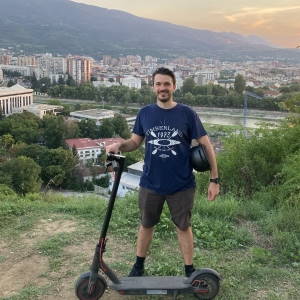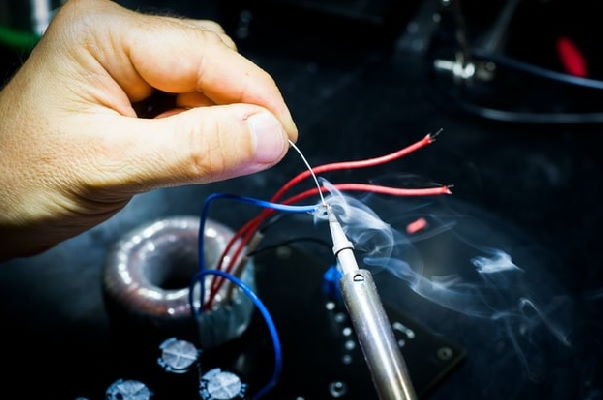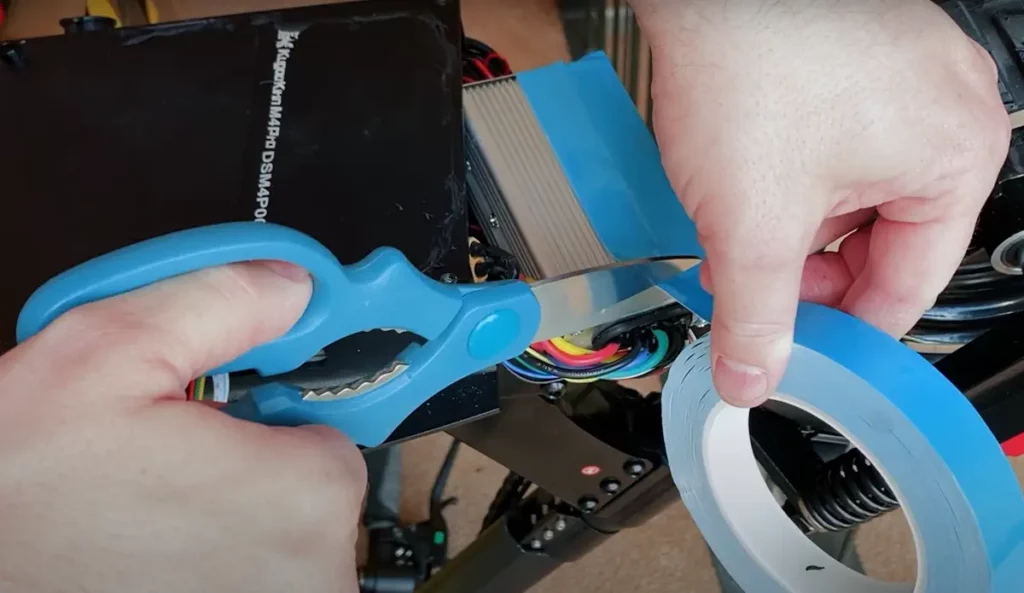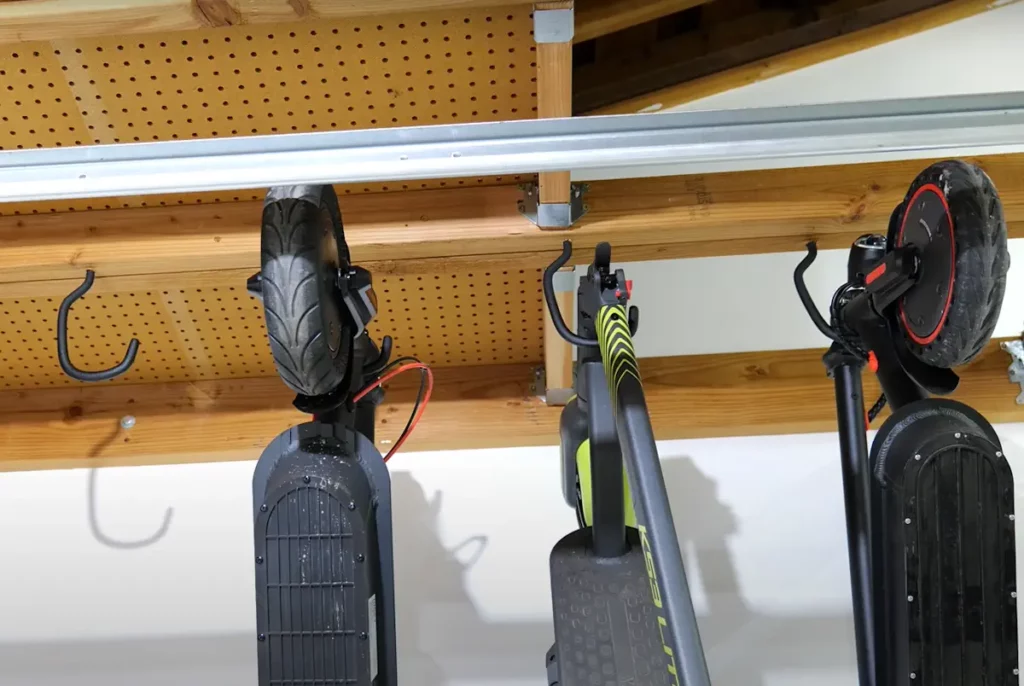Out of the many high-quality brake options, the hydraulic brakes win hands down with their stopping power and reliability.
In this guide, I’ll break down all there is to know about electric scooter hydraulic brakes, including their building blocks, pros and cons, as well as their adjustment and repair procedures.
What are hydraulic brakes?
Hydraulic brakes, a popular braking system, utilize liquid pressure to stop or slow down a vehicle. Components include brake lines, a master cylinder, a caliper, brake pads, and a rotor disc. These brakes are preferred for their consistent performance and powerful stopping ability. Leading hydraulic brake brands include Shimano, NUTT, Magura, and Formula.

Components of electric scooter hydraulic brakes
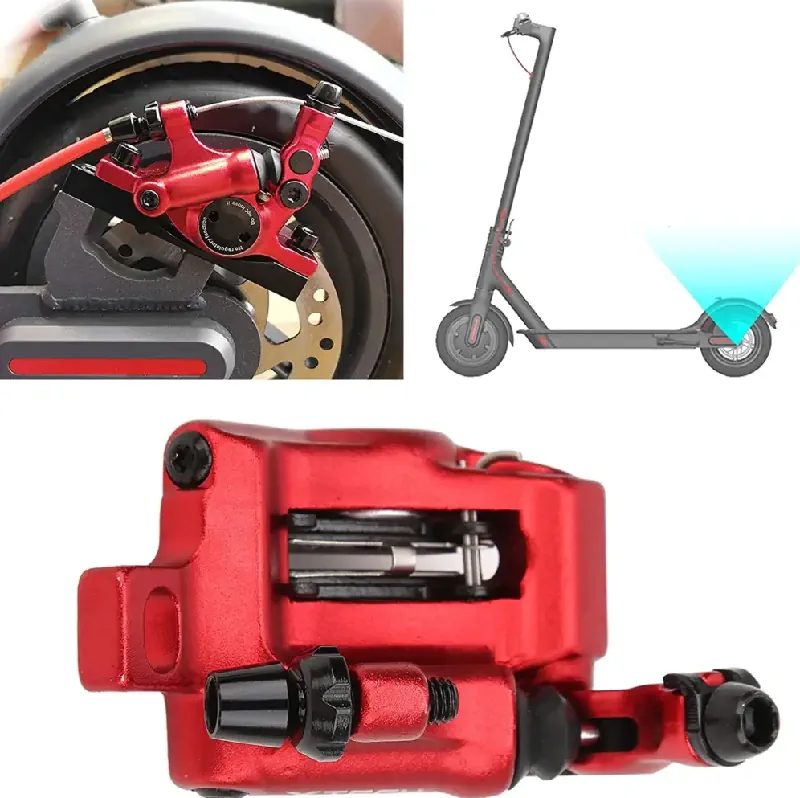
Electric scooter hydraulic brakes consist of key components – the scooter’s handlebars house, a master cylinder with a piston, and reservoir for hydraulic fluid storage.
Standardly, mineral oils are the hydraulic fluid of choice, although high-end electric scooters may use DOT (Department of Transportation) brake fluid, known for its ability to handle high temperatures and reserved for more powerful models.
A brake line, a narrow tube, carries hydraulic fluid from the master cylinder to the brake caliper. The caliper, housing single or multiple pistons, engages the brake pads when necessary.
The system is completed with a metal rotor disk, usually attached to the rear wheel’s hub.
Understanding these components makes it easier to grasp how the hydraulic braking system operates in electric scooters.
How do electric scooter hydraulic brakes work?

When the rider squeezes the scooter’s brake, the master cylinder’s piston propels fluid through the brake line to the caliper.
The hydraulic fluid pressure compels the caliper pistons to engage the brake pads, creating friction with the rotor disc, ultimately slowing the scooter to a stop.
Pros and cons of electric scooter hydraulic brakes
- superior stopping power by amplifying the force applied to the brake lever, allowing the hydraulic system to generate a more powerful force that effectively stops the scooter
- the braking system is enclosed inside the electric scooter and isn’t exposed to water or dirt, it doesn’t require frequent maintenance
- better control because they can brake as fast or as gradually as the rider pleases
- they don’t add any load to the electric scooter’s motor
- use incompressible fluid, leading to reduced friction in brake lines and enhancing the system’s durability
- maintaining and servicing them is difficult and expensive
- may experience reduced performance in cold temperatures, with mineral oil thickening below -15°F and DOT fluid turning viscous below -30°F.
- made of high-quality materials and are almost always more expensive than mechanical brakes
- spare parts of an electric scooter hydraulic brake are hard to find
- the brake fluid could leak and lead to brake failure
How to adjust and repair hydraulic brakes on an electric scooter?

Here are some common hydraulic brake issues with ways to adjust or repair them.
Decreased brake lever reach
If pulling your brake lever all the way doesn’t provide sufficient stopping power, the issue might be the distance from the handlebar.
Use the adjustment knobs on the brake levers – some twist by hand, others need tools. Consult your scooter’s manual for the right tool.
Turn the knob right to extend the lever, left to bring it closer. Increase the distance for more stopping power, then test your scooter.
Check out this video for a visual guide; the process applies to electric scooters as well.
Warped brake disc
If your electric scooter with hydraulic brakes shows reduced braking power and produces scraping sounds during braking, inspect the brake disc. A bent disc might be causing the scraping noise as it interacts with the brake caliper.
Rotor disc damage often occurs after a fall or collision.
For minor bends, you can use a disc rotor truing tool or a standard wrench. Spin the rear wheel, mark the bend’s position, then use the tool to straighten the disc, aligning it with the brake caliper.
This method requires time, effort, and precision, but it’s generally effective. Refer to this video for guidance.
If the disc is too damaged to fix with a truing tool, you’ll probably need to get it replaced.
Loose brakes
If your electric scooter’s hydraulic brakes feel loose, the rear tire may not stop completely when you use the brake lever.
Another indicator of loose brakes is an unusual noise during braking, suggesting improper contact between the brake pads and the rotor disc.
To address this, first, check the rear wheel disc for bends. Spin the wheel and ensure the disc’s edge aligns straight with the caliper edge. If aligned, move on to the next step.
Adjust the contact point by using a ratchet, extension, and a suitable Allen key. Rotate the caliper arm screw anticlockwise to release tension, align the arm for free wheel spin without slack brakes, and tighten the screw carefully to secure the adjustment.
Spin the wheel while pulling the brake lever to confirm the fix. Unlike before, the wheel should now completely stop.
Check out the video below to gain a clearer understanding of the adjustment process in action.
Air bubbles in the hydraulic fluid

Air bubbles in the hydraulic fluid can make it compressible, affecting your electric scooter’s braking performance. To address this, you can bleed your hydraulic brakes.
However, it’s a somewhat advanced procedure, so I suggest attempting it only if you have the necessary knowledge and skills (a friend attempted this but encountered issues, eventually taking the scooter to a mechanic for a fix).
If you’re up for the challenge, here’s a video outlining the steps.
Begin by using an Allen key to unscrew the bleed cap on the handlebar and connect it to an an empty lever syringe. You can acquire these syringes individually or as part of hydraulic bleeding kit.
Uninstall the caliper, pause the brake mechanism with a brake block, and unscrew the caliper cap to access the hydraulic fluid. Using a syringe, add mineral oil.
After reinstalling the caliper, remove the brake block, and return to the initial syringe, then pull the brake lever multiple times to eliminate air bubbles.
Once finished, detach the syringe, and complete the procedure by screwing the bleeding cap back on.
Worn-out or damaged parts
If any components in your electric scooter’s hydraulic brake system are worn or damaged, it’s advisable to have them replaced by a professional technician.
Since brakes are crucial for safety, risking an extensive repair or replacement without expertise is not recommended.
While minor adjustments are manageable, complex tasks should be entrusted to someone with a deeper understanding of the brake system.
How to change hydraulic brakes on an electric scooter?
To change hydraulic brakes on an electric scooter, you’ll need:
- new hydraulic brake calipers
- hoses
- fluid
- a bleed kit
- Allen wrenches
- a torque wrench
- rags
- safety glasses
First, remove the old calipers and hoses, being careful not to spill any brake fluid. Then, install the new calipers and hoses, applying a thin coat of hydraulic brake grease to the pistons and threads of the hose fittings.
Next, bleed the hydraulic brake system using the bleed kit. Attach the kit to one of the calipers, fill it with fluid, and open the bleeder valve on the caliper. Pump the brake lever until fresh fluid flows out of the bleeder valve, then close the valve and repeat on the other caliper.
Finally, test the brake system by pumping the brake lever a few times and top off the fluid reservoirs.
If you are not comfortable changing hydraulic brakes yourself, take your scooter to a qualified mechanic.
Best electric scooters with hydraulic brakes
Based on my experience and testing of many different scooters, these are the best ones that have hydraulic brakes:
- Kaabo Wolf Warrior
- Kaabo Mantis Pro SE
- Kaabo Wolf King
- Nami Burn E-2 Max
- Apollo Phantom V3 (option for hydraulic brakes)
- Dualtron Storm
- Dualtron Thunder
- Dualtron Ultra 2
- Dualtron X2
- Inokim OXO
- EMove Cruiser (semi-hydraulic)
Best hydraulic brakes for electric scooters
Your electric scooter’s hydraulic brakes should always come from a reputable brand. These brands use premium materials and subject the brakes to thorough safety testing before market release.
Here are some brands well-known for their excellent performing brakes:
- Shimano
- Formula
- Magura
- NUTT
- Tektro
Are hydraulic brakes worth it on an electric scooter?

Hydraulic brakes on your scooter are very worthwhile, especially if safety is your top priority. They stand out as the highest-quality brakes, offering superior stopping power and excellent performance for emergency braking.
Hydraulic brakes demonstrate consistency across various terrains and most weather conditions. Moreover, many common issues can often be self-addressed through simple screw adjustments.
However, it’s worth noting that hydraulic brakes can be somewhat pricey, and finding spare parts may pose a challenge.
Also, major maintenance or replacements may require professional assistance. If you’re comfortable with the investment, hydraulic brakes prove to be an excellent choice for your electric scooter.
